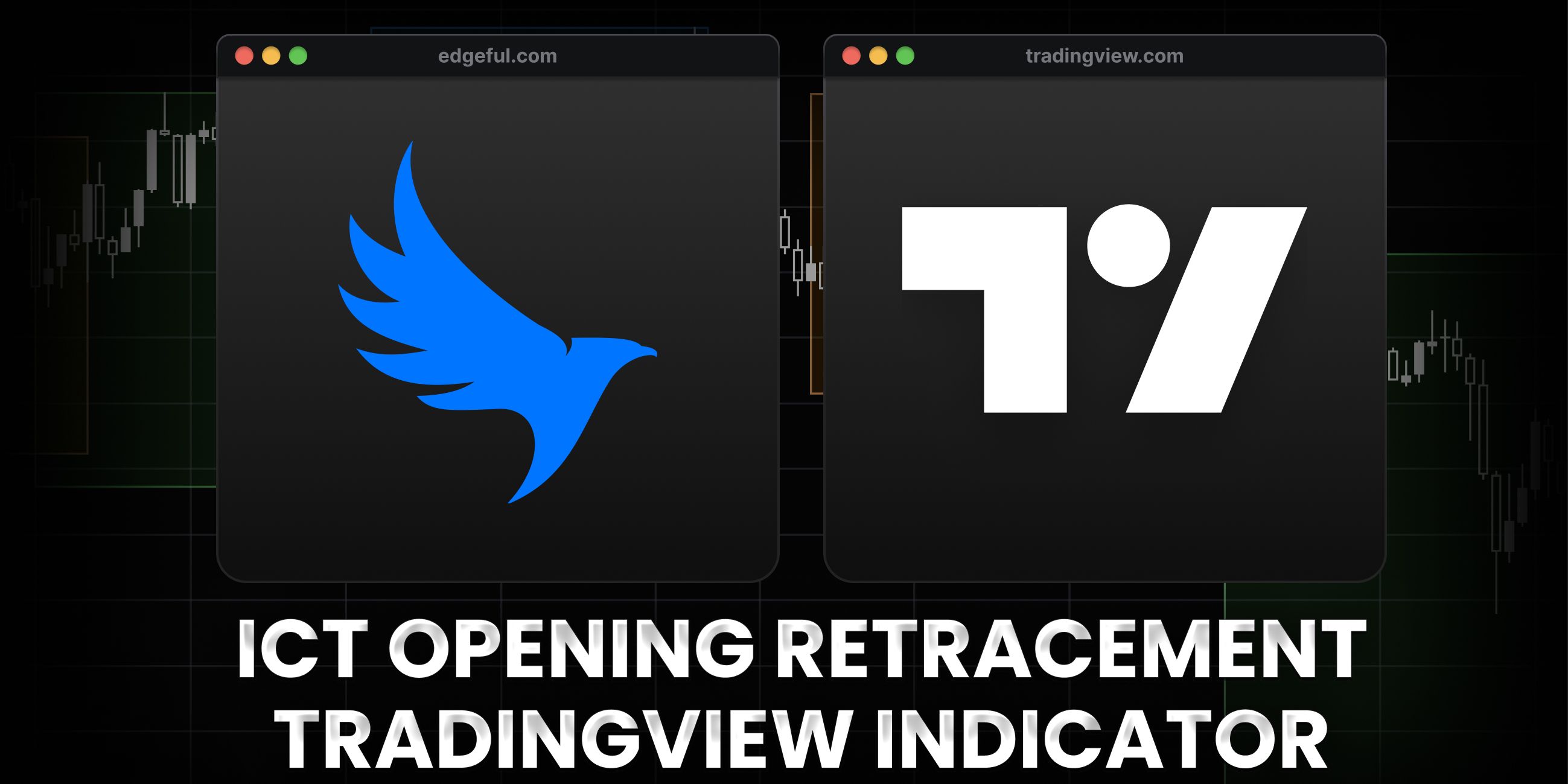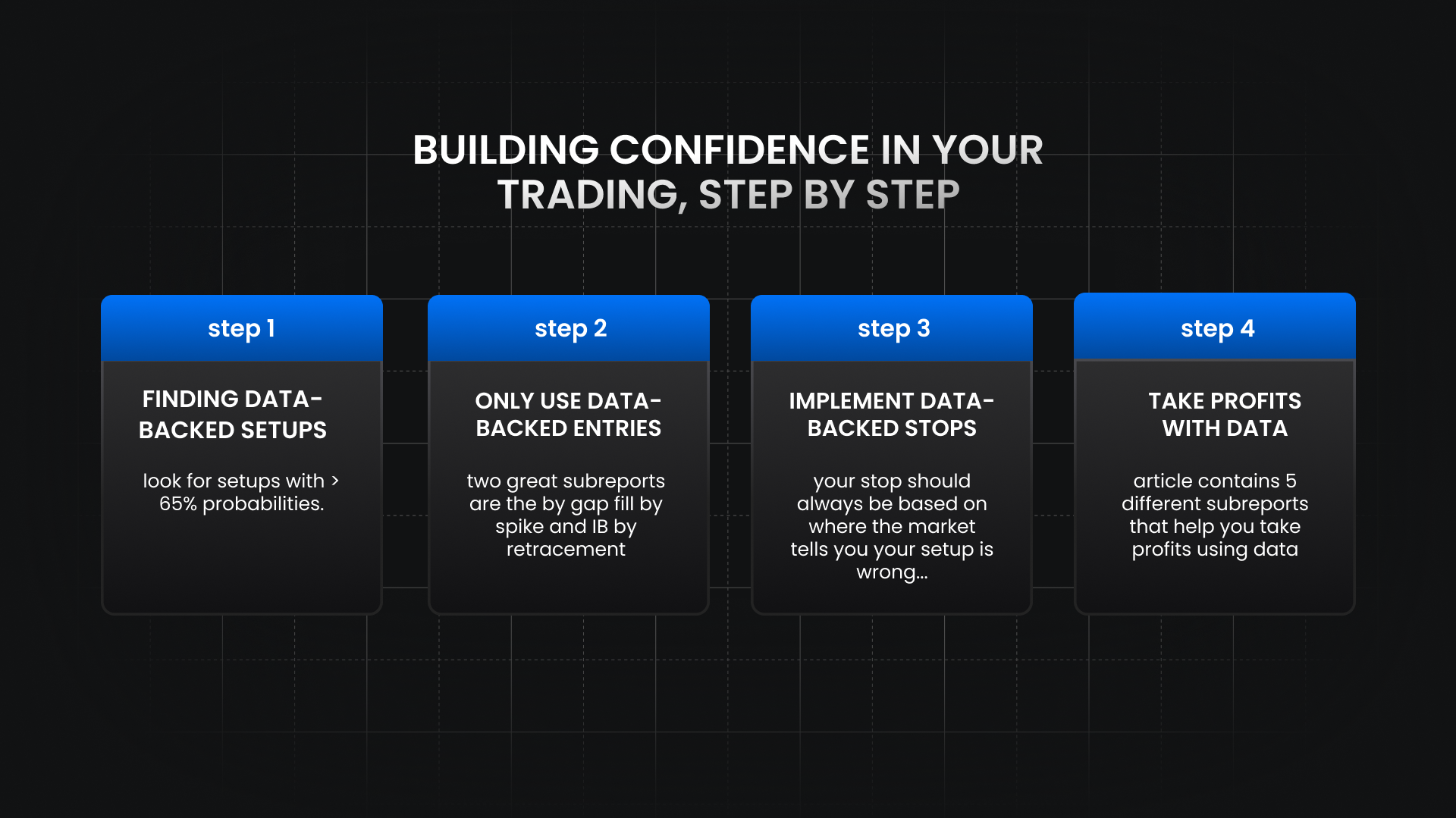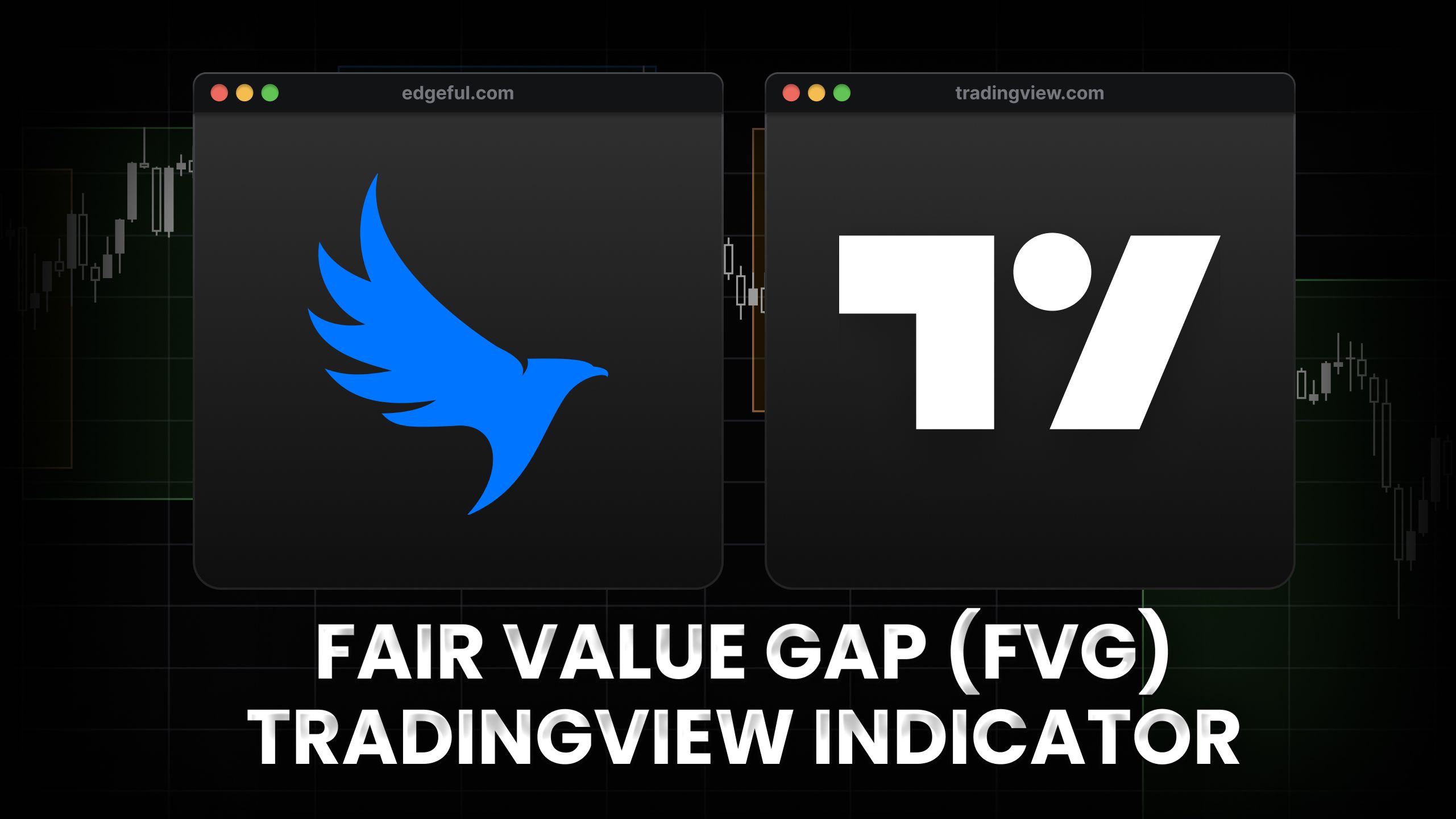ICT opening retracement indicator for TradingView

most traders completely ignore the midnight opening price when they're planning their day.
they mark yesterday's close, the opening range, maybe the initial balance... but the midnight open? that level doesn't even make it onto most charts.
here's what you're missing: the midnight opening price (00:00 ET) is one of the most reliable mean reversion levels in futures trading.
and the ICT opening retracement indicator makes tracking it automatic.
this is one of the top TradingView indicators for futures trading because it removes the guesswork and plots critical levels for you every single day.
in this article, you're going to learn what the ICT opening retracement indicator actually measures, how it works on TradingView, the real probabilities on YM (and why other tickers will be different), and how to use it in your trading without overcomplicating things.
table of contents
- what is the ICT opening retracement indicator?
- how the ICT opening retracement indicator works on TradingView
- YM ICT opening retracement stats (NY session)
- how to use the ICT opening retracement indicator in your trading
- customizing the ICT opening retracement indicator
- ICT opening retracement vs gap fill: what's the difference?
- does the ICT opening retracement indicator work for stocks?
- frequently asked questions
- key takeaways
what is the ICT opening retracement indicator?
the ICT opening retracement indicator plots the midnight opening price (00:00 ET) on your TradingView charts automatically.
it tracks how often price retraces back to this midnight level within the New York session (9:30am-4:00pm ET) or London session (3:00am-8:00am ET).
the "ICT" refers to Inner Circle Trader concepts, but what matters here is the actual data... and the probabilities are strong across multiple futures contracts.

what it measures
the ICT opening retracement indicator tracks two scenarios:
- scenario 1: the session opens above the midnight open → how often does price retrace back down to midnight?
- scenario 2: the session opens below the midnight open → how often does price retrace back up to midnight?
here's the critical detail: retracements only count if they happen within the trading session window.
if you're tracking the New York session, price has to hit the midnight open between 9:30am and 4:00pm ET for it to count as a retracement. if it happens at 7:00am during pre-market, it doesn't count in the data.
this session-specific measurement is what makes the ICT opening retracement indicator reliable—it's not measuring random overnight noise.
this session structure is also critical for understanding market session breakout strategies.
how the ICT opening retracement indicator works on TradingView
the ICT opening retracement indicator auto-plots a line at the midnight opening price every day. by default, it's blue, but you can change the color to whatever fits your chart.

here's the process:
step 1: midnight open is marked
at 00:00 ET (midnight Eastern Time), the indicator plots the opening price of that candle. this becomes your reference level for the entire session.
step 2: "opened above" or "opened below" is determined
when the New York session opens at 9:30am ET, the report compares the 9:30am open to the midnight open.
- 9:30am open is above midnight open → "opened above" scenario
- 9:30am open is below midnight open → "opened below" scenario
this 9:30am opening price determines the setup. not pre-market. not overnight action. the session open at 9:30am is what matters.
step 3: midnight open becomes your retracement target
if the session opened above at 9:30am, you're watching for price to retrace back down to the blue line (midnight open).
if it opened below, you're watching for price to retrace back up to the blue line.
YM ICT opening retracement stats (NY session)
here's the actual data for YM (Dow Jones futures) in the New York session over the last 6 months:

when YM opens above the midnight open:
- 63% of the time, price retraces back down
- 37% of the time, price does not retrace
when YM opens below the midnight open:
- 67% of the time, price retraces back up
- 33% of the time, price does not retrace
these aren't coin flips—you're looking at mean reversion behavior that happens more than 6 out of 10 times.
the "opened below" scenario (67%) is slightly more reliable on YM than the "opened above" scenario (63%).
these stats are YM-specific
ES will have different probabilities. NQ will have different probabilities. GC, crude oil, Bitcoin... all different.
if you're trading ES or NQ, check edgeful's ICT opening retracement report for those specific tickers. don't assume YM's 63-67% stats apply across the board.
how to use the ICT opening retracement indicator in your trading
step 1: add both indicators to TradingView
you need two indicators for this to work:
- ICT opening retracement indicator (plots the midnight open line)
- market sessions indicator (plots NY, London, Tokyo, Sydney sessions)
to get access, log into edgeful and connect your TradingView account. once you're set up, both indicators will appear in your "invite only" section.

step 2: at 9:30am, check where price opened
when the NY session opens at 9:30am ET, look at where price is relative to the midnight open line:
- opened above? → short bias, targeting the midnight open as downward retracement
- opened below? → long bias, targeting the midnight open as upward retracement
this isn't a guaranteed trade... it's a probability-based target zone.
step 3: use midnight open as target or entry
depending on your strategy, the midnight open can work two ways:
option 1: profit target
if you're already in a trade moving toward the midnight open, use it as your high-probability exit.
example: YM opened above the midnight level and you're short. the blue line is where you take profits.
option 2: entry level
if you're waiting for a retracement setup, you can use the midnight open as an entry zone.
example: price opens above and starts dropping toward the blue line. you look for long entries at that level, expecting a bounce.
step 4: only count retracements within the session
if price hits the midnight open before 9:30am or after 4:00pm ET, it doesn't count.
the ICT opening retracement indicator is session-specific. the 63-67% probabilities only apply to retracements that happen between 9:30am and 4:00pm for the NY session.
combining with other setups
the ICT opening retracement indicator works best when it lines up with other high-probability zones.
for example:
- midnight open aligns with previous session's close → gap fill confluence
- midnight open aligns with key support/resistance → technical confluence
- price opens above yesterday's high and retraces to midnight → outside day setup
- midnight open aligns with previous day's range levels → session bias confirmation
the more factors pointing to the same level, the stronger your edge.
customizing the ICT opening retracement indicator
the ICT opening retracement indicator is fully customizable on TradingView.
line color and width
the default midnight open line is blue, but you can change it to any color. just double-click the indicator, go to style settings, and pick a color that works with your chart.
you can also adjust the line width—make it thicker if you want it more visible, or thinner for a cleaner chart.
change the reference time
the default is midnight open (00:00 ET), but you can customize this to a different time if you're testing other strategies.
for example, if you want to use the 6:00am open instead of midnight, you can adjust the indicator to plot that level.
ICT opening retracement vs gap fill: what's the difference?
both are mean reversion strategies. both involve price retracing to a specific level. but they use different reference points.
gap fill measures retracement to previous session's close
the gap fill indicator looks at yesterday's closing price. when there's a gap between yesterday's close and today's open, the question is: how often does price fill that gap?
on most futures, gap fills happen 70-90% of the time depending on gap size.
ICT opening retracement measures retracement to midnight open
the ICT opening retracement indicator doesn't care about yesterday's close. it's focused on the midnight opening price (00:00 ET) and how often price retraces to that level during the session.
on YM, this happens 63-67% of the time in the NY session.
when they align, you get double confluence
sometimes the midnight open and the previous session's close are the same level (or very close).
when that happens, you have both probabilities pointing to the same target.
example: YM closes at 43,500 yesterday. midnight open is 43,500. NY session opens at 43,600.
you've got:
- gap fill target at 43,500 (yesterday's close)
- ICT opening retracement target at 43,500 (midnight open)
two high-probability setups targeting the exact same level—that's powerful confluence.
does the ICT opening retracement indicator work for stocks?
short answer: not really.
the ICT opening retracement indicator is designed for 24-hour markets—futures, forex, and crypto.
stocks only trade from 9:30am to 4:00pm ET during regular hours. there's no meaningful "midnight open" because there's no overnight session with real liquidity.
even if you look at pre-market activity, it doesn't follow the same patterns as continuous 24-hour markets.
best instruments for the ICT opening retracement indicator
the ICT opening retracement indicator works best on:
- futures: ES, NQ, YM, RTY, CL, GC
- forex: EUR/USD, GBP/USD, USD/JPY
- crypto: Bitcoin, Ethereum
these markets have continuous overnight trading, which makes the midnight open a real reference level with actual price action around it.
frequently asked questions
what is the ICT opening retracement indicator?
the ICT opening retracement indicator plots the midnight opening price (00:00 ET) on TradingView and tracks how often price retraces to this level within the NY or London sessions. on YM, retracements happen 63-67% of the time depending on whether the session opens above or below midnight.
how do I add the ICT opening retracement indicator to TradingView?
log into edgeful, connect your TradingView account, and the indicator will appear in your "invite only" section. you'll also need to add the market sessions indicator for accurate tracking.
what's the difference between ICT opening retracement and gap fill?
gap fill measures retracement to the previous session's close. ICT opening retracement measures retracement to the midnight open. sometimes they align at the same level, giving you double confluence.
does the ICT opening retracement indicator work on all futures contracts?
yes, but probabilities vary by ticker. YM shows 63-67% retracement rates, but ES, NQ, and other contracts will have different stats. always check edgeful's ICT opening retracement report for your specific ticker.
can I use the ICT opening retracement indicator for stocks?
not really. stocks don't have a meaningful midnight open because they only trade during regular hours (9:30am-4:00pm ET). the indicator is designed for 24-hour markets like futures, forex, and crypto.
key takeaways
- the ICT opening retracement indicator plots the midnight opening price (00:00 ET) automatically on TradingView
- it measures how often price retraces to this level within the NY or London sessions
- on YM (NY session), retracements happen 63% when it opens above, 67% when it opens below
- "opened above/below" is determined by the session open (9:30am for NY, 3:00am for London)
- retracements only count if they happen within the session window—pre-market moves don't count
- requires the market sessions indicator for accurate tracking
- works best on 24-hour markets (futures, forex, crypto)—not ideal for stocks
- probabilities vary by ticker—always check your specific instrument on edgeful
- different from gap fill: ICT uses midnight open, gap fill uses previous close
- when midnight open and previous close align, you get double confluence
- customizable colors, line width, labels, and session selection
p.s. want access to the ICT opening retracement indicator and all our other custom TradingView indicators? get started with edgeful here


